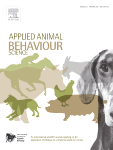Document type : Scientific journal available online before publication in Zebrafish
Authors: Marica Andersson, Petronella Kettunen
Preview: The zebrafish is becoming an increasingly popular research animal around the world. Its welfare is affected by an array of environmental factors, such as food access and water quality. Holding density is an important welfare aspect, not least due to its interaction with other housing conditions. Despite the extensive use of zebrafish in research, little is known of how densities affect its welfare. In this systematic review, we have performed a large literature search, compiled, and evaluated all publications regarding zebrafish holding density. We have analyzed how density effects growth, reproduction, and stress response, including behavior, water quality, and pathogenic outbreaks in young and adult fish. Our review shows that the holding densities tested vary largely depending on the research focus, for example, body growth or behavior. In fact, research indicates that future recommendations on holding density could depend on which welfare aspects are considered. Overall, there is a need for more studies investigating the interactive effects of density on welfare indicators, such as reproduction coupled with stress response. We stress the necessity of including holding density in universal housing guidelines and reporting information on holding conditions of larvae and adults when publishing zebrafish work.






